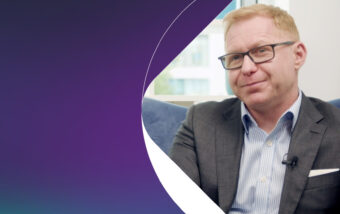Investing is the process of delaying consumption from today to sometime in the future and employing that money in the meantime in the markets to grow at a rate at least in line with inflation, but preferably more. Investing money well requires a logical and robust framework on which to build a lifelong investment programme. Ten foundation stones provide the solid base on which to build such a programme.
Foundation stone 1: Have faith in capitalism and confidence in the markets
Capitalism is an adaptive, robust economic system that has delivered incredible developments to the benefit of mankind. It may not be fair, but it has helped to drag many of the World’s poorest out of abject poverty over the past century. It creates wealth. The markets are an efficient mechanism for rewarding those who provide capital to those engaged in the pursuit of wealth creation.
Foundation stone 2: Accept that risk and return go hand in hand
The one thing we know for sure about risk is that if an investment looks too good to be true, it probably is.
One of the inescapable truths of investing is that to achieve higher returns, you have to take on more risk1. That seems logical enough, but you would be surprised just how many investors seem to think that it is possible to get high returns with low risk. The one thing we know for sure about risk is that if an investment looks too good to be true, it probably is.
Foundation stone 3: Let the markets do the heavy lifting
In investing, there are two main sources of potential returns. The first is the return that comes from the market and the second is the return generated through an investor’s skill. There are two main ways in which an investor – using their skill – can try to deliver a better return than the market return: one is to time when to be in or out of the markets (market timing), the other is to pick great individual stocks (stock picking). Empirical evidence suggests that trying to beat the market is a tough game, with very few long-term winners. As one cannot control the return of the market, and returns from skill are rare, the structure of your portfolio becomes key.
Foundation stone 4: Be patient – think long-term
There is no easy or quick way to investment success. In the short-term, market returns can be disappointing. The longer you can hold for, the more likely the returns you will receive will be at worst survivable, and hopefully far more palatable. It is time that allows small returns to compound into large differences in outcome for the patient investor. If you want to be a good investor, you have to be patient. Impatient investors tend to lose faith in their investments too quickly, with often painful consequences.
Foundation stone 5: Be disciplined
To generate good long-term returns takes time, patience and belief in the markets, it is essential to put in place the discipline to stop yourself succumbing to impatience and ill-discipline.
Patience and discipline are close bedfellows. Once you realise that to generate good long-term returns takes time, patience and belief in the markets, it is essential to put in place the discipline to stop yourself succumbing to impatience and ill-discipline. Discipline comes in many forms: sticking to the principles above; constructing well-researched and tested portfolios that should weather all investment seasons relatively well; not chasing investments that have gone up dramatically, but sticking with the logical reasons for not owning them in the first place; and the discipline to not become despondent about short-term, unimportant market noise, and to focus on your long-term strategy.
Foundation stone 6: Build a well-structured portfolio
Once you accept that returns come from markets and are rarely enhanced by the judgemental approaches of professional managers of market timing and stock picking, it is evident that structuring a well-thought-out mix of different investments (referred to as asset classes) should sit at the heart of your investment programme. Your long-term portfolio structure will dominate the investment returns obtained during your investment lifetime2.
Foundation stone 7: Use diversification to manage an uncertain future
Not putting all your eggs in one basket is an intuitive and valuable concept. No-one knows what the future holds and owning a highly diversified portfolio is the key tool that we have to make sure that we are prepared for whatever the markets throw at us over time. It brings its own challenges. Inevitably there will always be one or two parts of the portfolio that are doing well, but one or two that are not. The patient and disciplined investor knows that there is little point in knee-jerk responses and that this is simply the way that markets are. The impatient and ill-disciplined will seek to change their strategy. More fool them.
Foundation stone 8: Avoid cost leakage from your portfolio
Costs eat away at the market returns that you should be gathering for yourself. Small differences in costs will compound into large differences over extended periods of time. Investment industry costs are high, particularly those related to judgemental (active) managers. If one takes two portfolios with the same gross (pre-cost) returns – one with a low cost of 0.25% a year and the other with a high cost of 1.5% a year – the low cost strategy will, on average, end up with a staggering 65% more money in the pot over 40 years3.
Foundation stone 9: Control your emotions by adopting a systematic approach
Unfortunately, evolution has hard-wired the human brain to be particularly poor at making investment decisions. Evidence of wealth destroying, emotion-driven decision making is plentiful, as impatient and ill-disciplined investors have the propensity to chase fund managers, and markets that have previously performed well, and sell poorly performing investments. Buy-high, sell-low is not a good investment strategy. Research4 reveals that this bad behaviour may cost investors around 2.5% per annum, on average. Given that equities have only returned around 5% above inflation, on average, that is a material erosion of potential wealth.
Foundation stone 10: Manage risks carefully across time
Keeping the risk in your portfolio at an appropriate level is achieved through ‘rebalancing’ periodically back to your long-term portfolio strategy.
Our approach to investing positions us as risk managers, rather than performance managers as advisers have traditionally been. Keeping the risk in your portfolio at an appropriate level is achieved through ‘rebalancing’ periodically back to your long-term portfolio strategy. Rebalancing involves selling out of better-performing assets and buying less well-performing assets i.e. selling, rather than buying ‘hot’ performing asset classes. Fund selection and due diligence and the ongoing governance of the investment process are all important risk management functions.
Employing a systematic investment approach – like the one we have developed – provides the discipline and objectivity that is required to avoid the pitfalls that all investors inevitably face. These foundation stones certainly make investing far simpler and easier, but never easy.
—
This post is a condensed form of our bi-monthly newsletter. To read the newsletter in full please click here.
—
[1] Sharpe, William F. (1964). ‘Capital asset prices: A theory of market equilibrium under conditions of risk’, Journal of Finance, 19 (3), pp. 425-442.
[2] Brinson, Gary P., Hood, L. Randolph, and Beebower Gilbert L., (1986) ‘Determinants of Portfolio Performance’, Financial Analysts Journal, vol. 42, No. 4, pp 40-48.
[3] Sharpe, W. F., (2013), The Arithmetic of Investment Expenses, Financial Analysts Journal, Volume 69 · Number 2, 2013 CFA Institute.
[4] Mind the Gap 2014 by Russel Kinnel, Morningstar.





